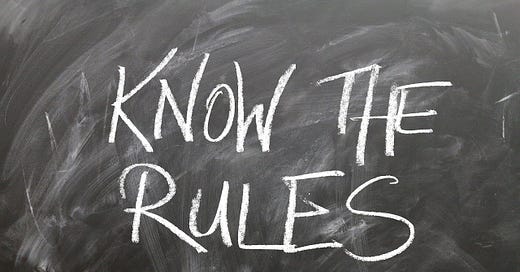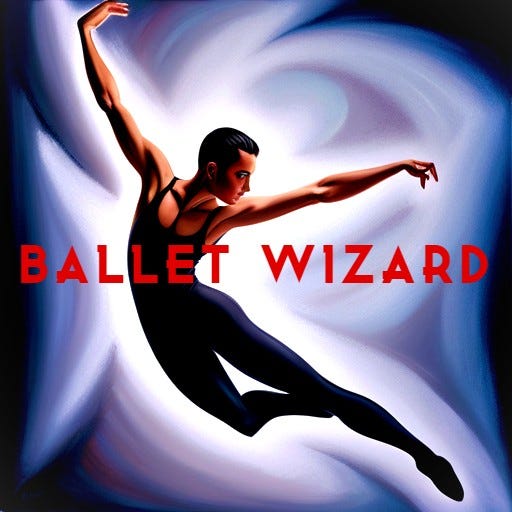3 ballet rules that will dramatically improve your technique
No matter if you're Vaganova or Balanchine.
When thinking about ballet technique, we often think about different kinds of methods such as Vaganova, Balanchine, Cecchetti, and more. They each have their rules regarding arm positions, how to move through port de bras, preparation for pirouettes, and so on. Many people pursue the same method to become better dancers, and yet…some dancers are better than other dancers. Why are there different results for the people who learn the same method? Why are some better than others?
I have three rules that are based on very simple logic, but get missed 99% of the time. So if you want to be ahead of your classmates, coworkers, or just be better than you were yesterday, here are three rules of ballet that you need to know.
#1. Your core must be a part of your movement
Ah yes, good friend. The core is everything. You cannot ignore your core, and it must always be the source of your power. Go back to my older newsletters and read about body mechanics. You will find the word core without fail in almost everything I write and teach.
Think about when and how to engage your abs when dancing. You have to think about it even before turning out your legs. You need to think about it as you begin to breathe. Although it is great to have strong abs, you can’t just tense abs to engage them. There is a specific and correct way to engage your abs.
First, you need to know how to engage your abs (specifically lower abs) about an inch or two below your belly button. If you know how, great. If you don’t, great—that’s why I’m here writing to tell you to go read this newsletter and get familiar with the instructions.
Second, you need to know that the engagement of your core is the base of every movement. This means that if you are moving your legs forward, the first thing that comes before your leg movement is your core engagement. If you are leaping, then your core must engage before the take off and before the landing. If you are doing plie, then you have to engage your core before you go down, and engage it again before you come up. Simple but not easy. It can be especially tricky if you’re not used to engaging your abs before any and every movement. Coordination is crucial. I was lucky enough to learn this from someone who understood Pilates, ballet, and math principles. That’s why I want you to keep reading. It was not well-known knowledge when I was a professional, and yet, it is the most important knowledge for you to have as a dancer.
I had to re-learn everything from standing, getting into turned-out positions, to grand allegro. The crazy thing is that I’m still finding so many places that I’m not incorporating my abs. And usually if you’re in pain, feel a weakness in your technique, or feel like you’re not improving, it’s because you have to go back to your abs.
Your abs must be your source of strength and focus. You’ve got to master this concept first.
#2. Pushing rather than pulling
This is something I didn’t fully get as a professional. But recently, I was able to walk this natural way by pushing the ground back and moving my body forward. And most of you will be like, “umm yes. How else do you walk?” But what’s crazy is that many dancers don’t do that in ballet. The mistake here is that dancers are using pulling mechanics when dancing and weakening themselves over time. This is as if you would be walking by pulling yourself forward by the front leg instead of pushing yourself forward by the back leg. You can dance very well by pulling mechanics, I did this for long time, and won some competitions, but I can tell you from my experience that it will lead you to injuries and your lines will be compensated. You will look weaker than if you learned to push.
Here are some examples of what it would look like in ballet:
Let’s say we are doing chasse forward. If you put down the front leg, putting your weight on it, and pulling yourself forward, this would be “pulling.” Pushing would be if you plie down on the back leg keeping your weight on the back leg, then pushing from the back leg to transfer your weight forward onto the front leg.
It is an easy mistake to make at the barre as well. Right before every combination whether from first position or fifth position, we tend to put down the front leg (straight leg) then pull ourselves into the position. By doing so we are already preparing ourselves to practice the pulling mechanism, and that is not good. So when you get into any starting position, push off from your back leg to step onto the front leg, rather than pulling towards the front leg. Or set the standing leg first then drop the working leg into preparation. One little tip is to keep both legs slightly soft as you go into any position as you engage your core. Do not lock into “straightened” legs and engage the quads to “straighten” your knees. This is especially important if you have hyperextension. The moment you lock into anything, you are not using your core.
This rule is connected to the concept of your center of gravity. Read this newsletter about how everything you do in ballet should be anchored to this area of power.
#3. Never lengthen what cannot be lengthened
This is probably one of the corrections that has been passed down from who knows when, and this correction itself has destroyed many talents in ballet. Ever heard corrections like your arms need to be long, have long legs, or worst one yet, make your spine long like it’s being pulled at both ends? Do you know what’s wrong with these corrections?
Your arms will never be longer.
Your neck will never get longer.
Your spine should never be long.
These corrections are actually very dangerous. Typically, when dancers try to make their arms longer, they hyperextend their arms, hold them way too far back, or they over-extend their shoulder blades out making their shoulder joints vulnerable to dislocation.
Same for legs. Limbs don’t just get long, and if you are somehow making them long, then you must be compensating somewhere else. It could be your hips, or even worse, your spine.
I beg you to never lengthen your spine. Its most healthy posture is its natural curve. And that posture is the most powerful place to create force, the safest place to take the impact, and the most beautiful to look at.
Here’s a revolutionary correction: Think about having short arms, legs, and spine. No more “lengthening” your body (that also includes pulling up from your head). If you want to be taller, you must put down the outside of your feet and shove them down to the ground to get taller. When you hear the correction “pull up!” You can pull your hamstrings up to your sit bones and pull up your whole hip bones. But you can only do this if you engage your core and make yourself “short and compact.”
If you want your arms to be longer, then keep them short.
If you want your legs to be longer, then keep them in their ball and sockets.
And if you want your spine to get longer, then learn to keep it strong in a neutral position (no tucking or lengthening).
It’s an illusion to look longer. And no dancer should try to be literally longer.
You want to move gracefully and effortlessly
Often dancers are described as graceful and effortless, and we are told that we should actually move without any effort. I think that idea can be misunderstood. It does not mean to be lazy or not to put any effort into dance. It’s quite the opposite. You must put more effort into the thing which will make you dance effortlessly. These three rules that I mentioned directly contribute to achieving that effortless and graceful dancing. I think it’s more accurate to say that there’s a lot of effort into making something look effortless. But “effortless” is not necessarily the goal.
The bottom line: Start from your core engagement, then think about pushing the core around to move, and finally move your spine, arms, and legs closely around your core.
Think how you can achieve this in your next class from the first combination, or maybe when you are working on a solo variation. Go back to the beginning and break everything down based on these three ideas.
And use the help of a teacher if you can (hey, maybe that’s me).




